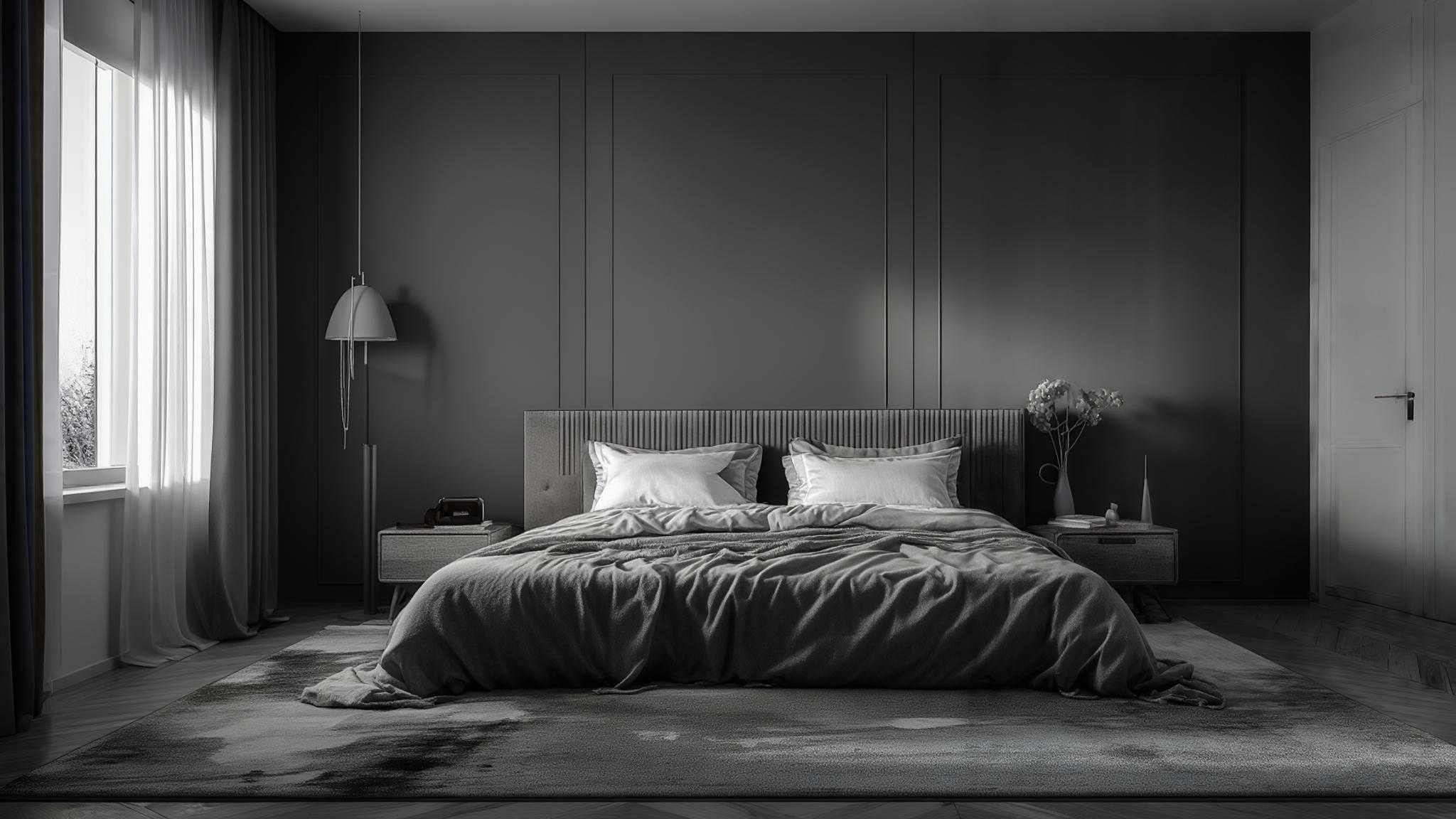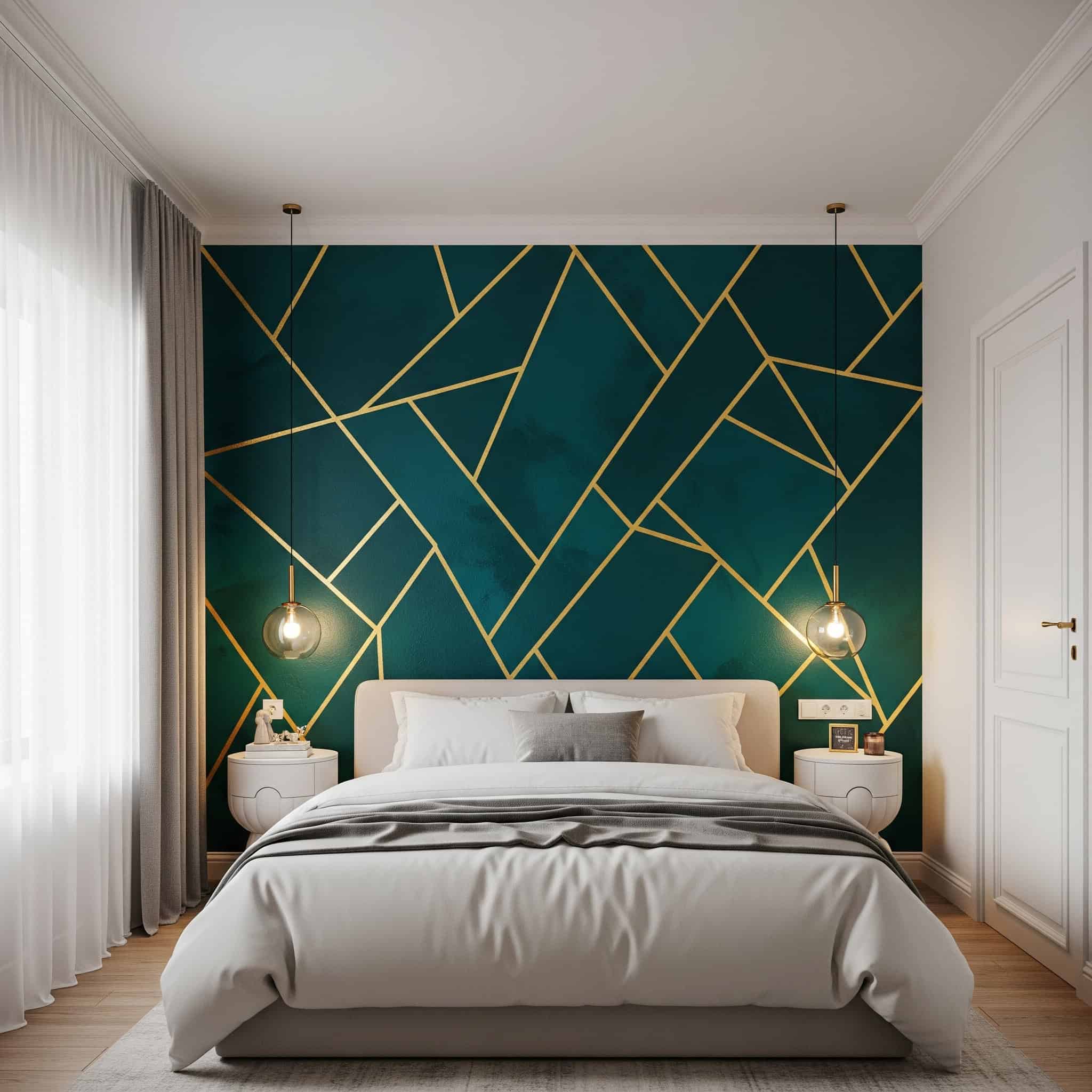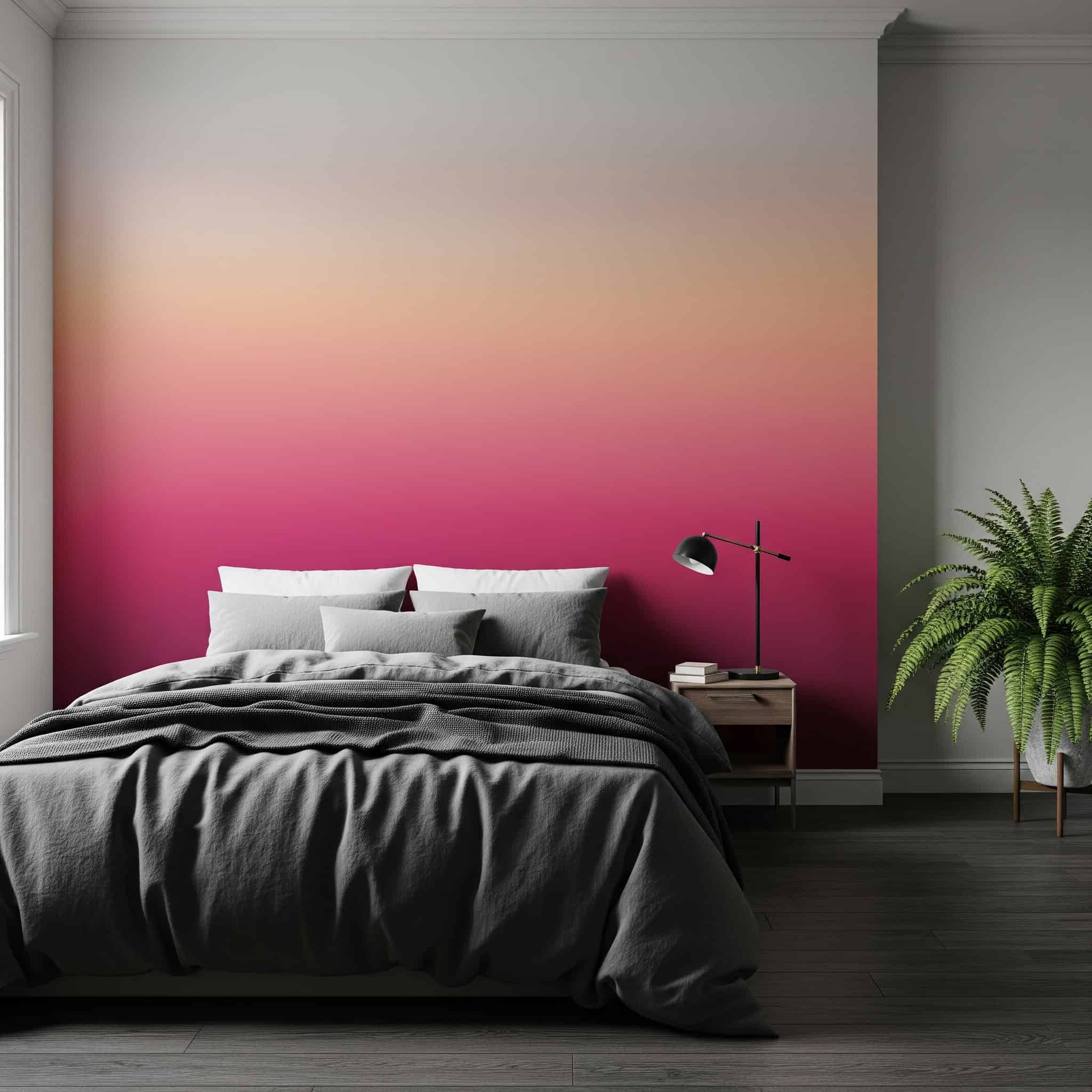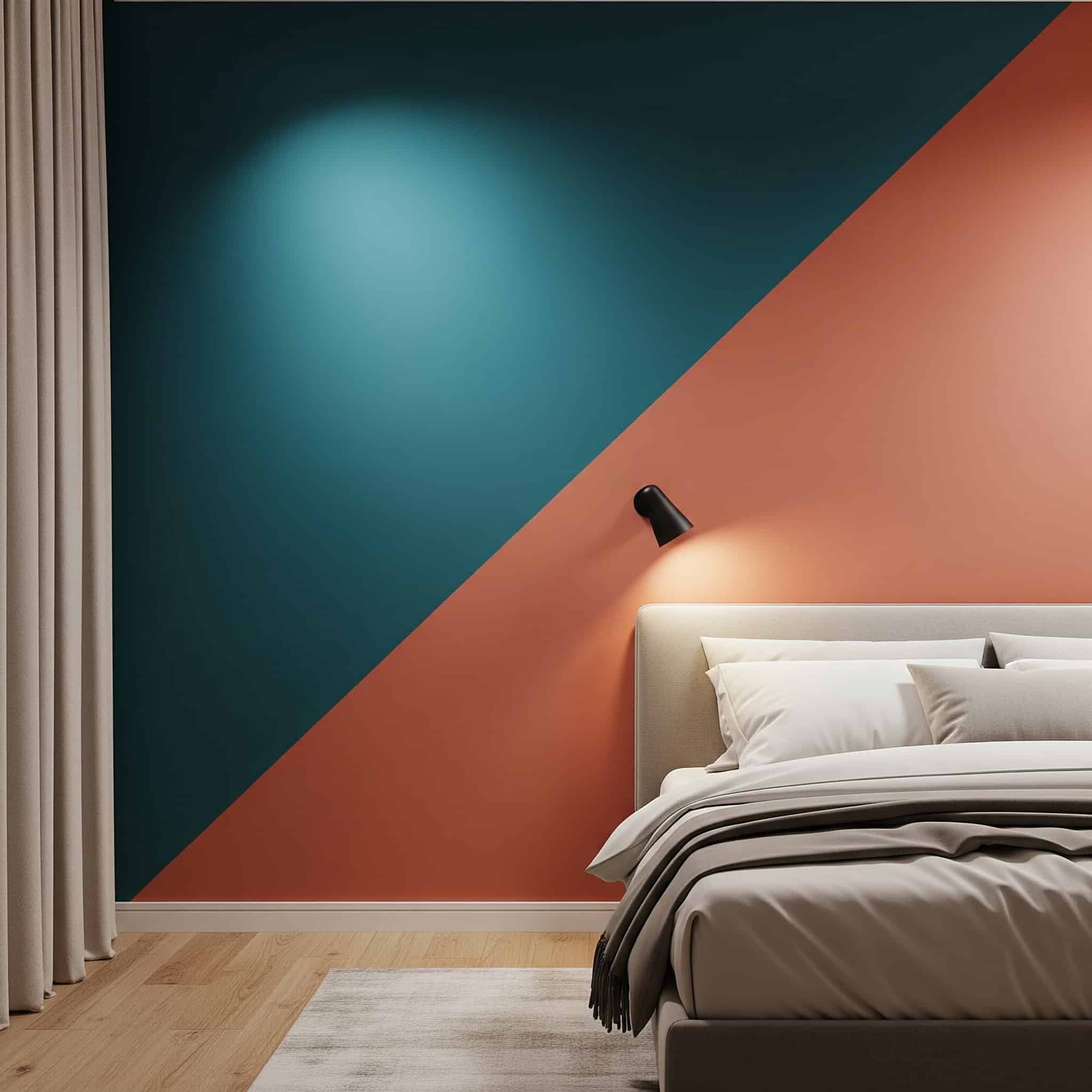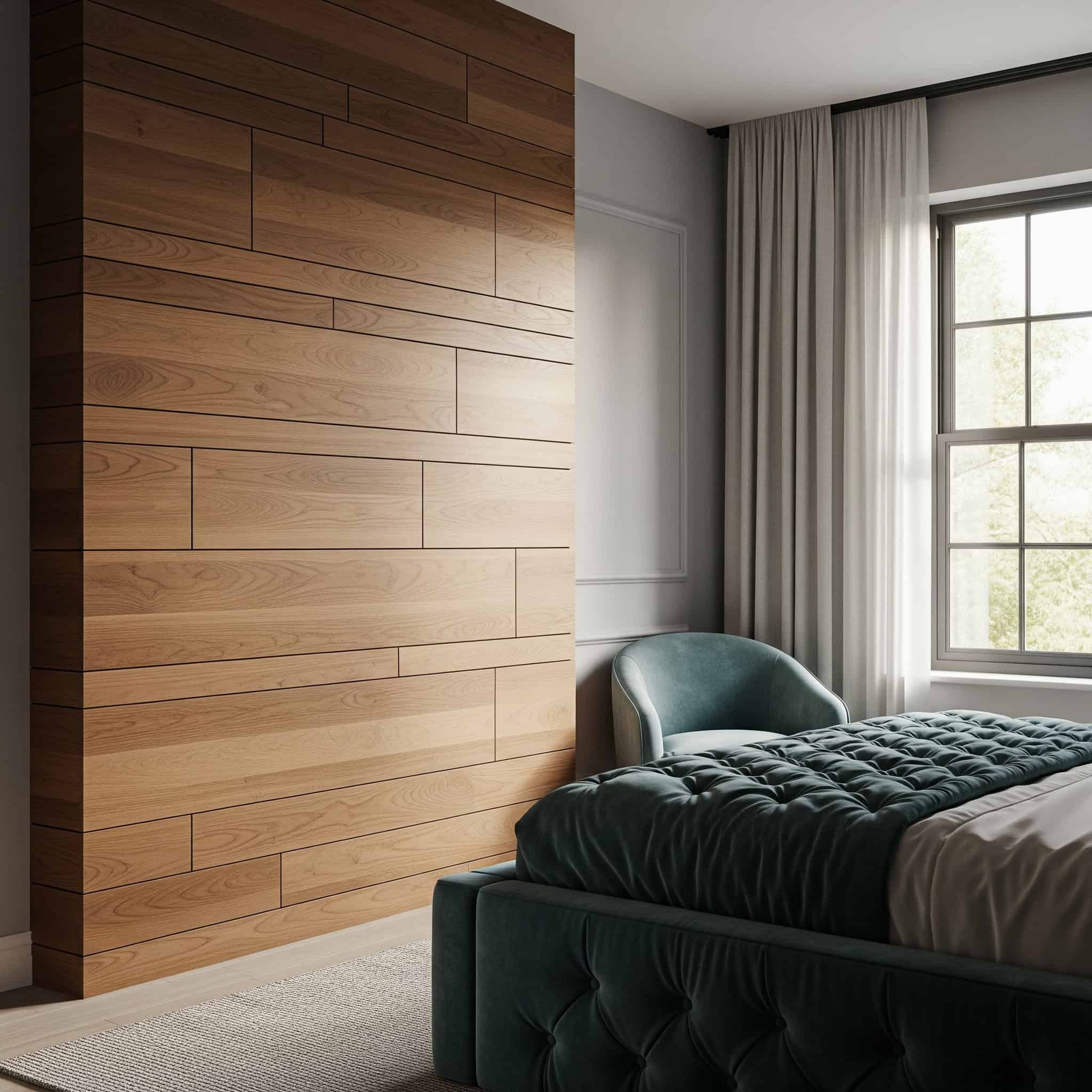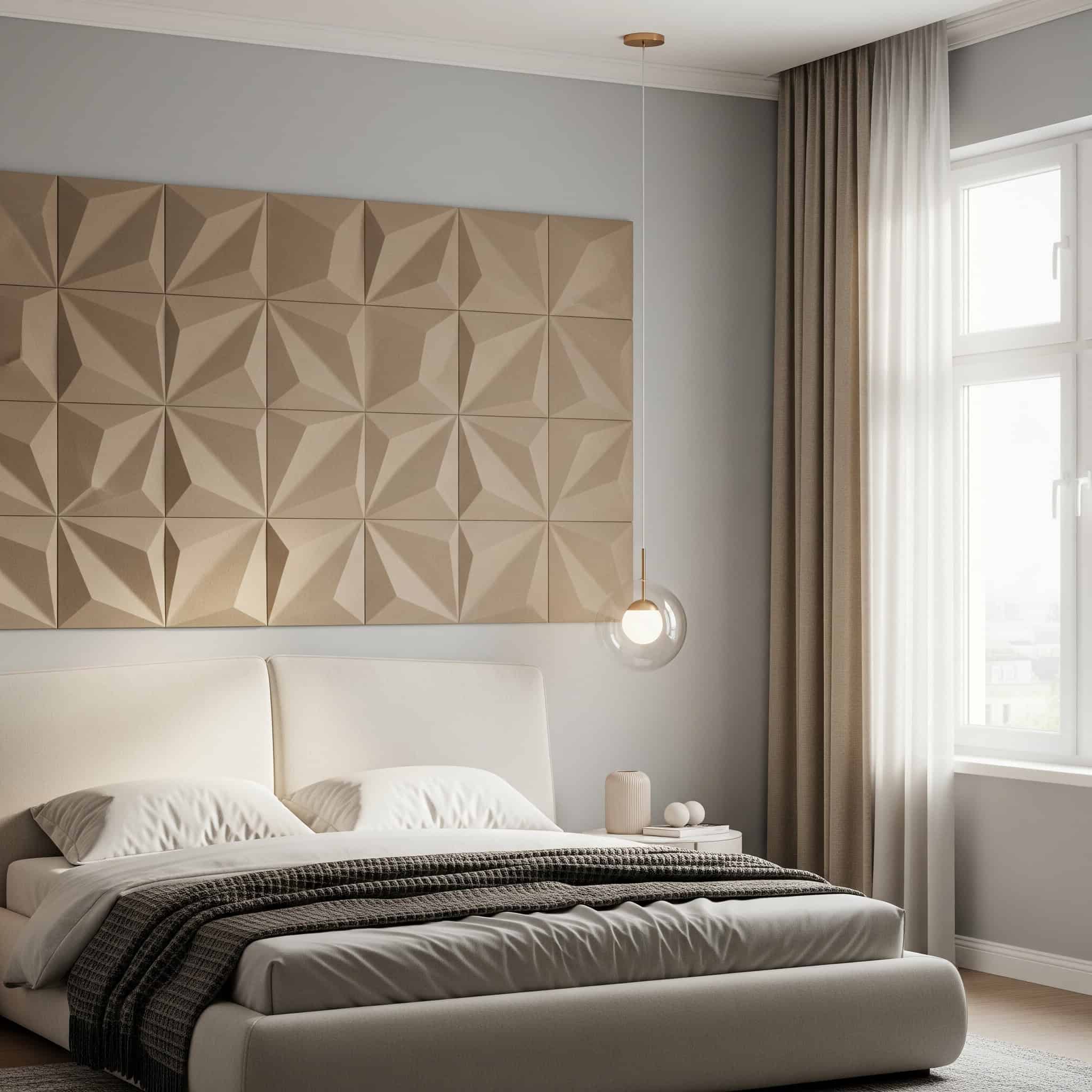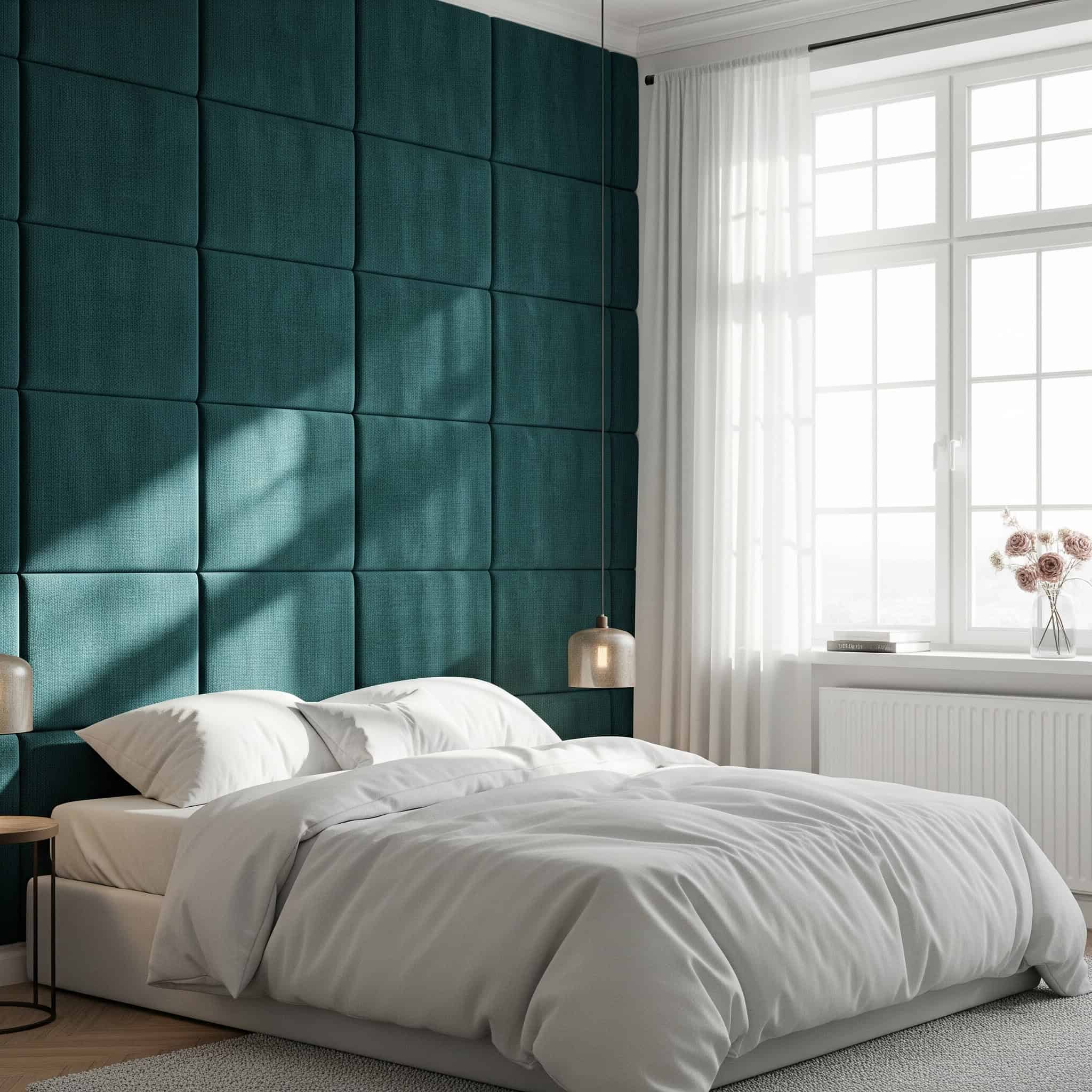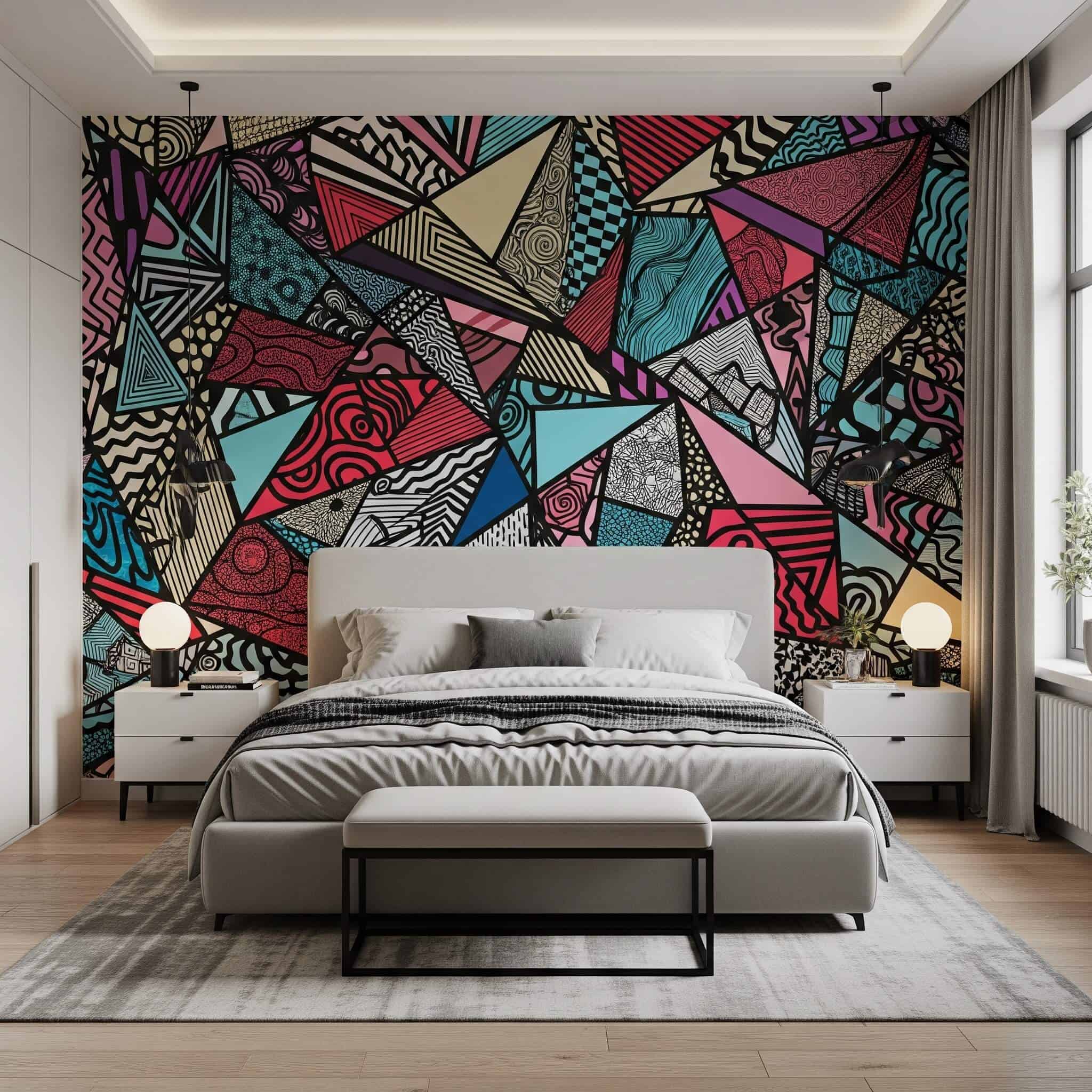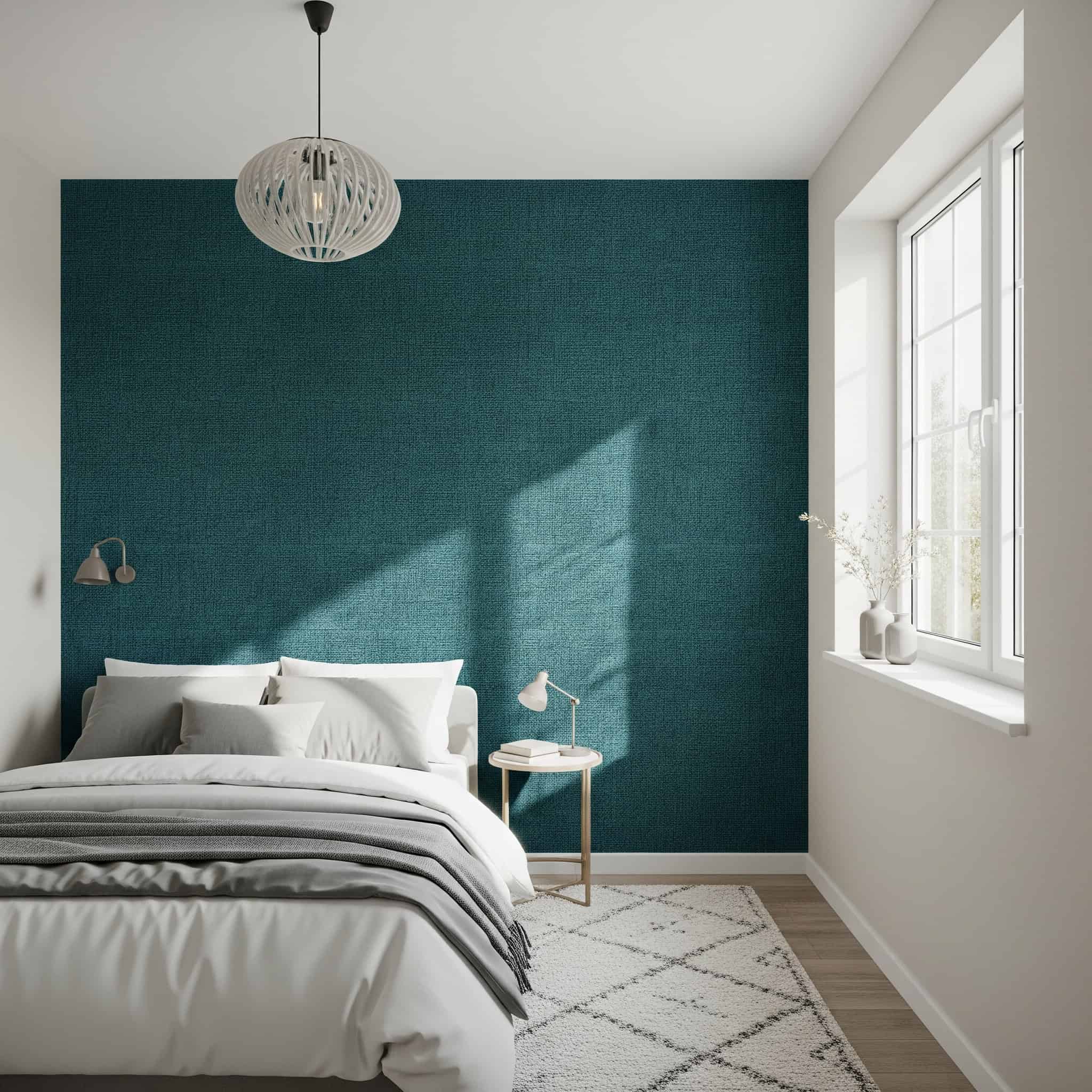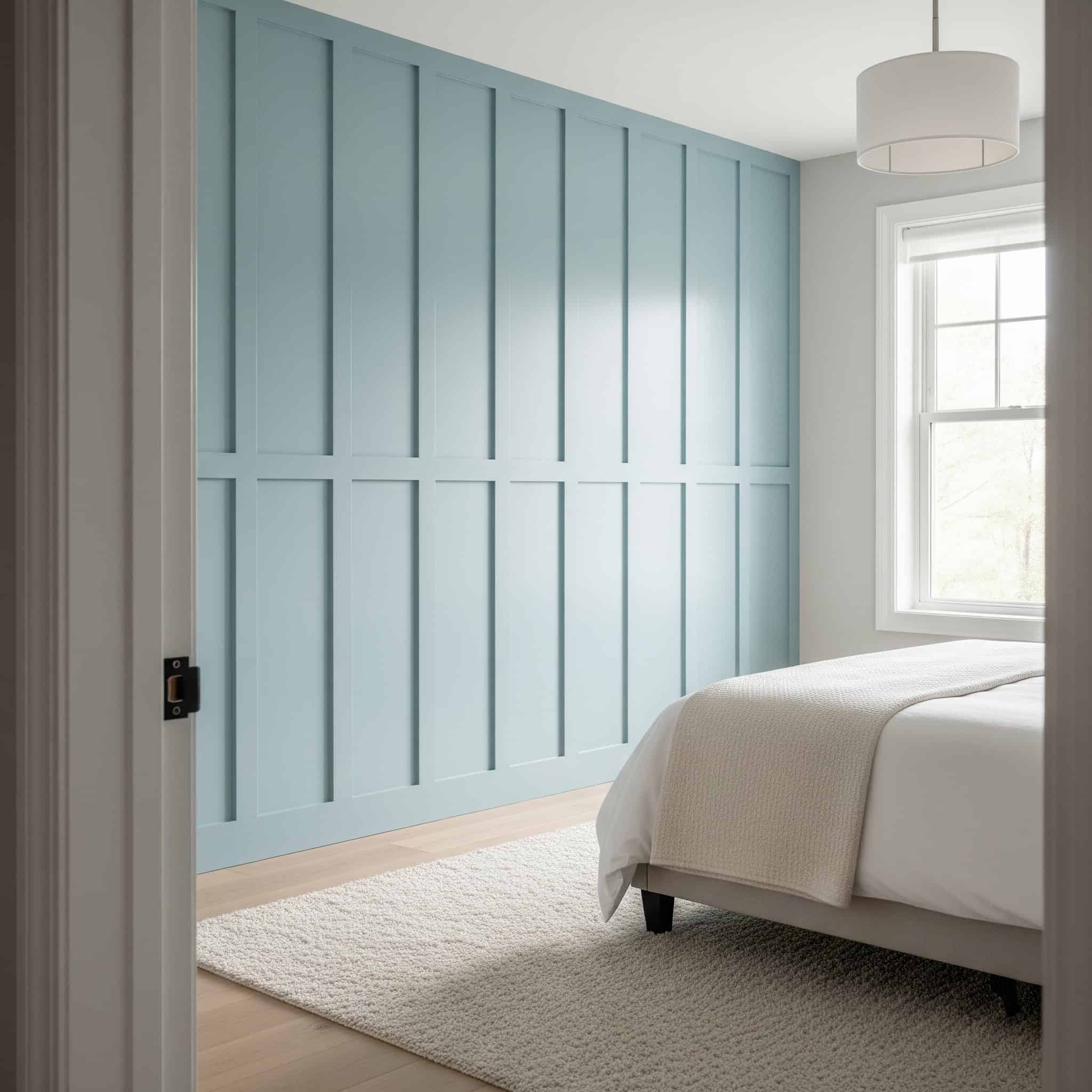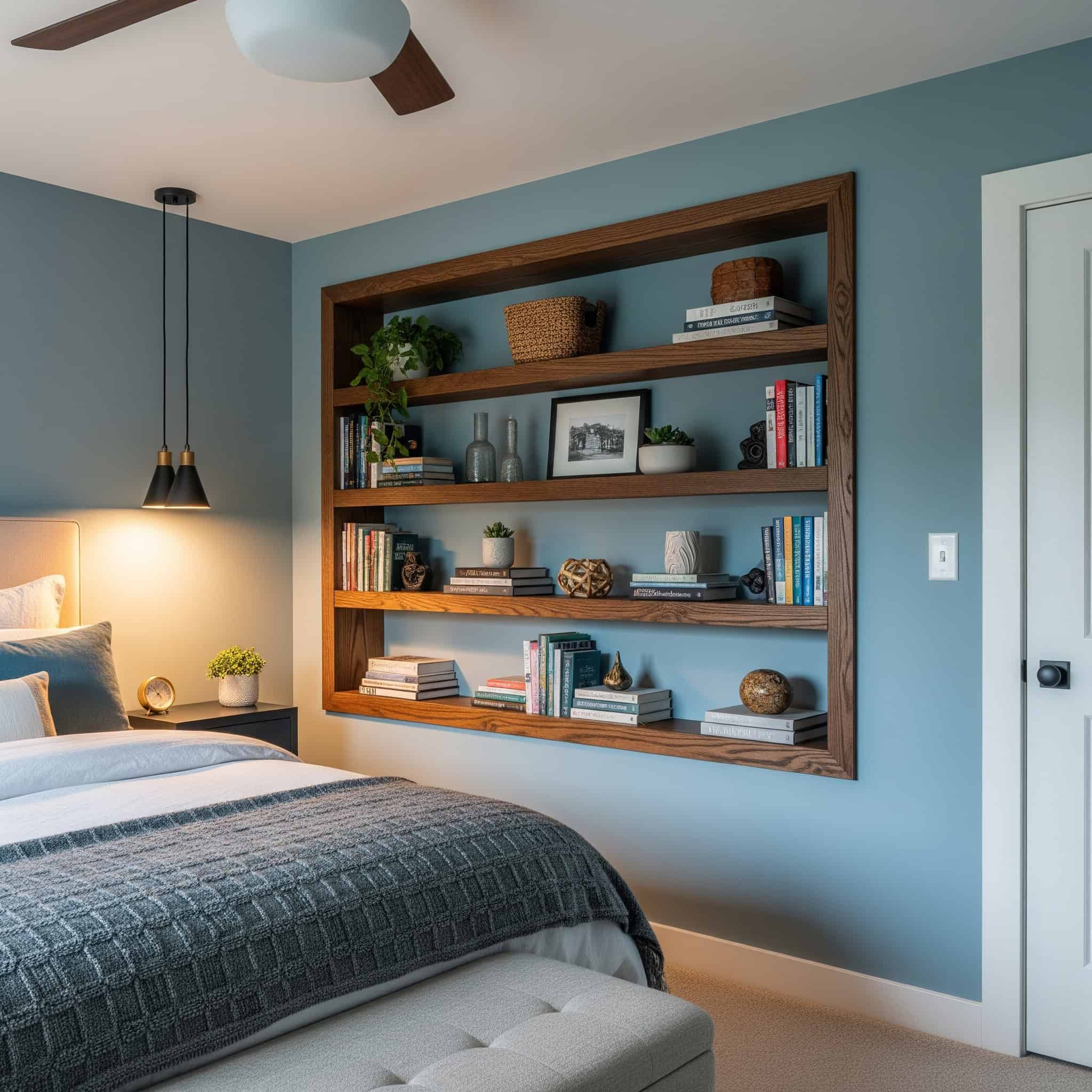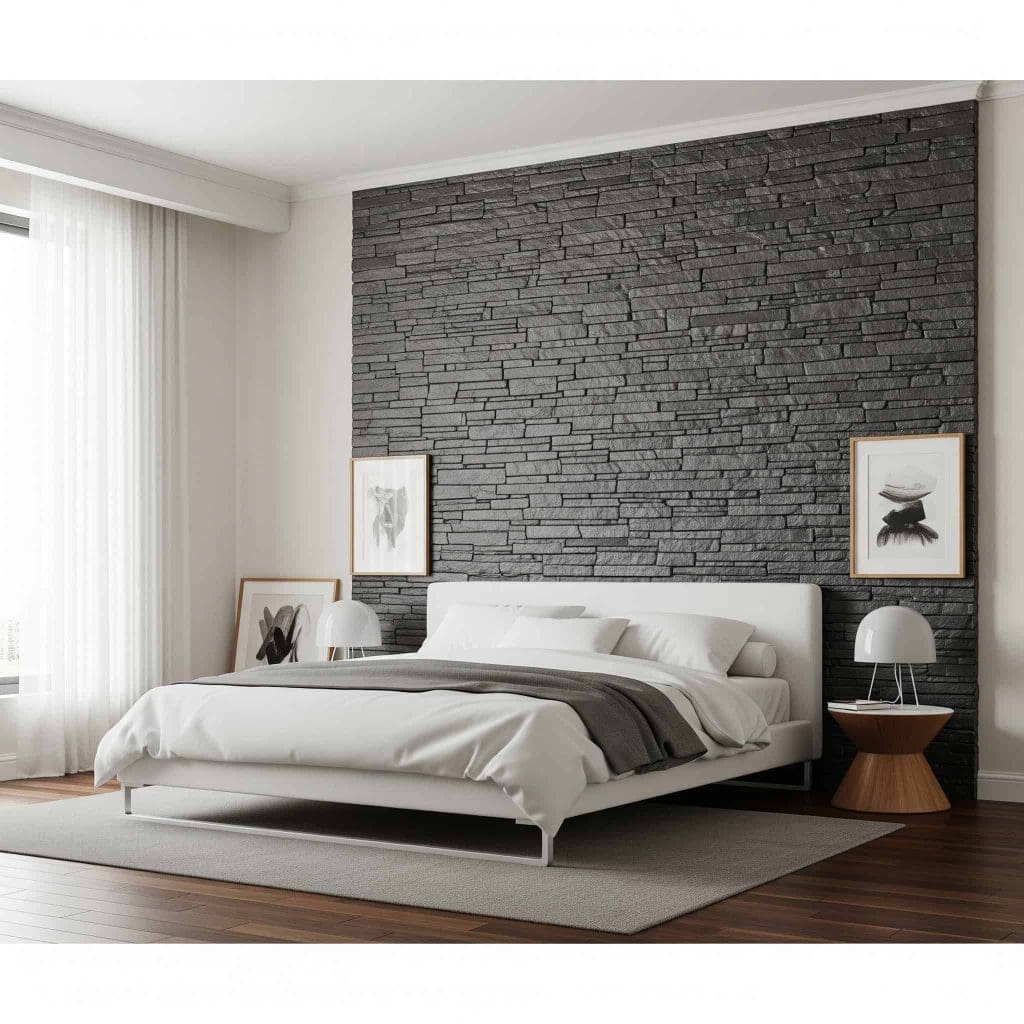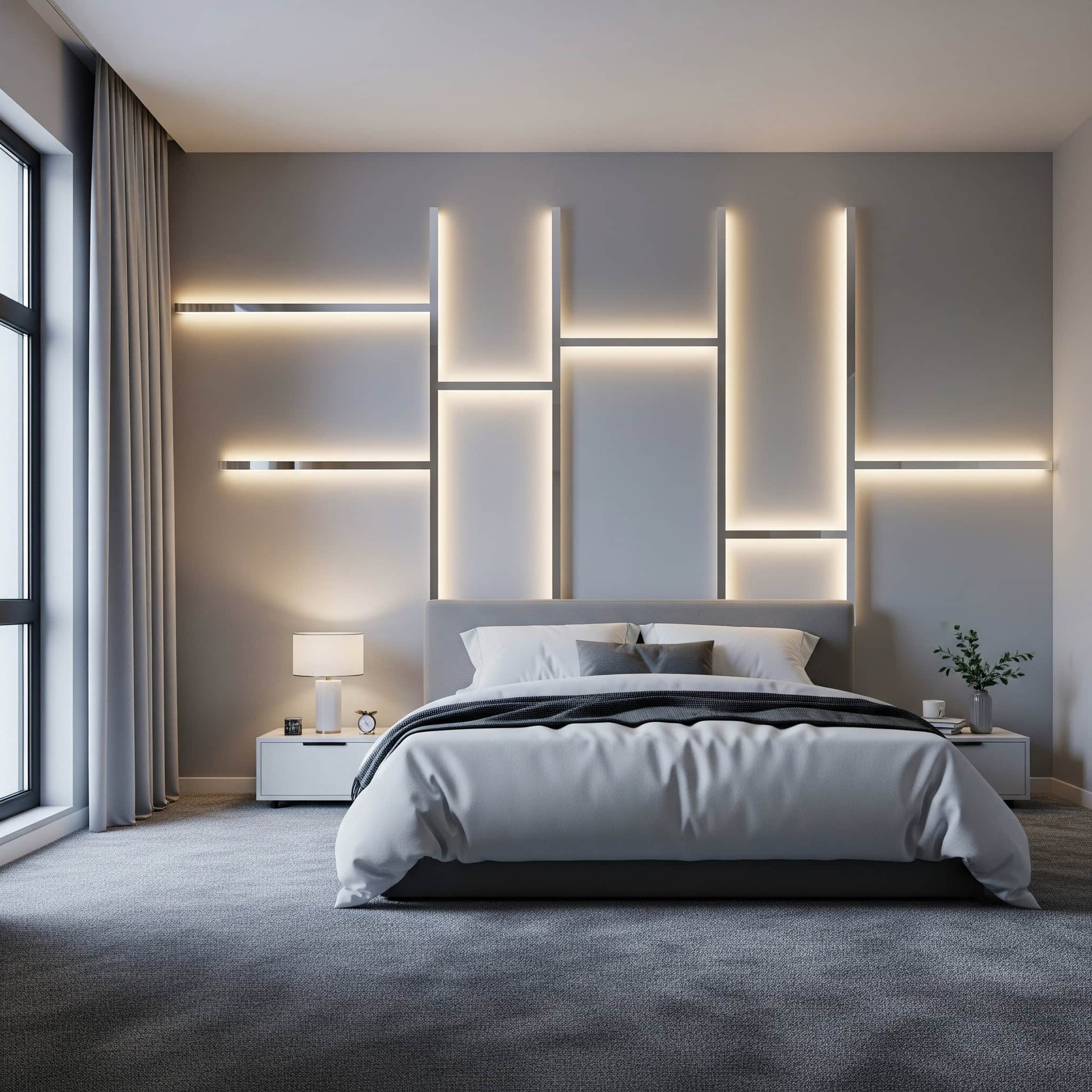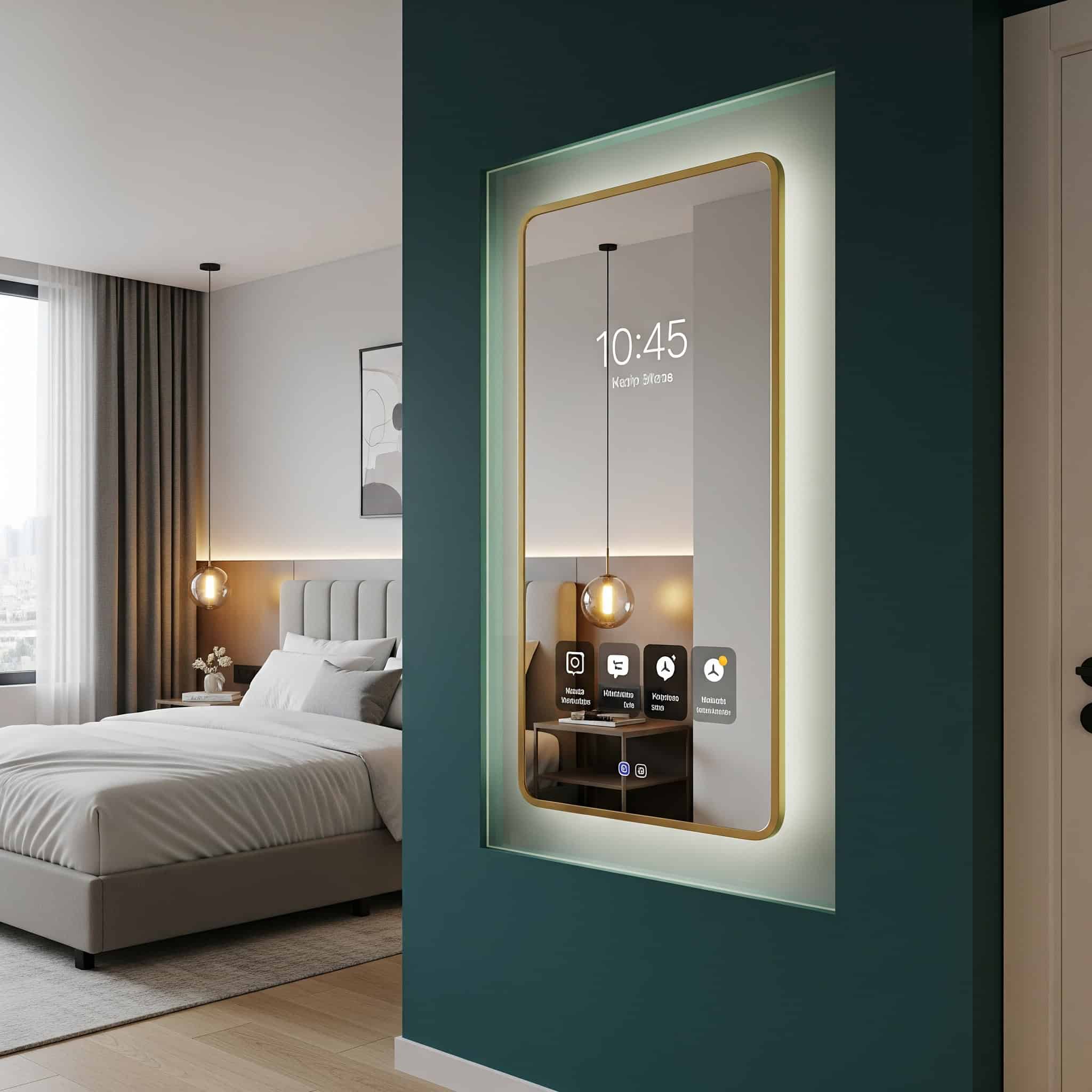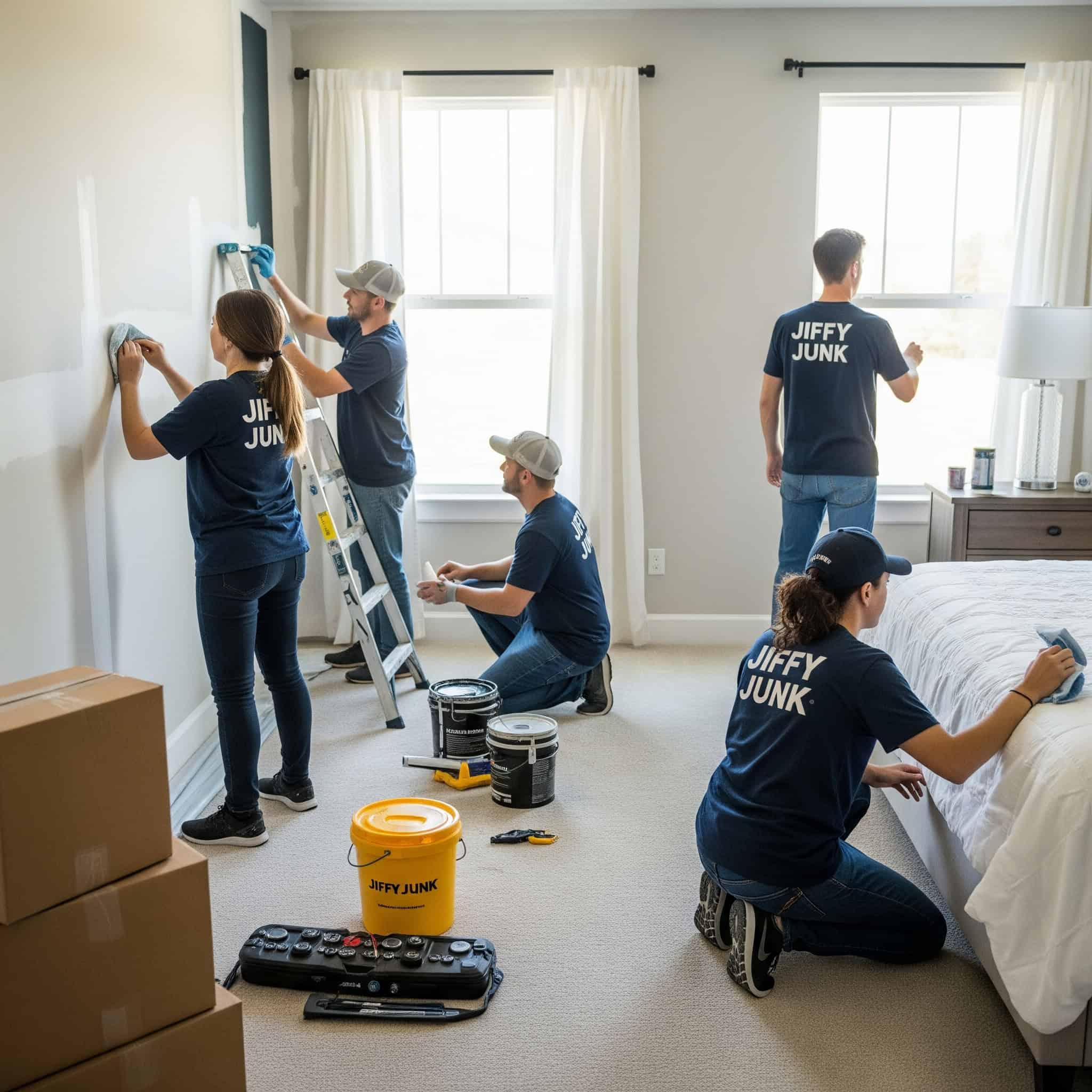25 Stunning Bedroom Accent Wall Ideas That Will Transform Your Space in 2025
According to a recent interior design survey, 78% of homeowners plan to incorporate an accent wall in their bedroom renovation projects this year. I recently helped a client transform their bedroom with a simple paint technique that completely changed how they felt about their space. Creating an accent wall is one of the most impactful ways to refresh your bedroom without a complete overhaul. Whether you’re looking for a simple weekend project or planning a major renovation, this guide covers 25 incredible accent wall ideas across five categories to inspire your next bedroom makeover.
Accent walls serve as focal points that draw attention to architectural features while adding visual interest through color, texture, or pattern without overwhelming the space. The psychology of color and spatial design indicates that strategically placed accent walls can influence mood, perceived room size, and even sleep quality when implemented correctly.
Table of Contents
-
What to Consider When Choosing a Bedroom Accent Wall
-
Paint and Color Techniques
-
Textural Elements
-
Wallpaper and Murals
-
Architectural Elements
-
Lighting and Technology Integration
-
How Jiffy Junk Can Help Prepare Your Space
-
Final Thoughts
What to Consider When Choosing a Bedroom Accent Wall
Before diving into specific ideas, you need to evaluate several key factors that will influence your accent wall’s success. Your room’s dimensions play a crucial role—smaller spaces require different approaches than larger ones. The existing elements in your room should guide your decision-making process. The wall you select matters significantly, as does the lighting in your space. When planning your bedroom renovation, proper junk removal is essential. Our guide on how to get rid of clutter can help you prepare your space for a fresh accent wall project. Your personal style preferences, budget constraints, and DIY skills will also shape your final choice.
Room proportions affect visual perception in ways you might not expect. Vertical elements can increase perceived ceiling height while horizontal patterns can widen a narrow room. I’ve seen this principle transform cramped bedrooms into spaces that feel much more open and inviting.
Light reflectance value (LRV) of colors and materials directly impacts how light bounces within a space. This technical aspect affects both the mood and perceived spaciousness of your bedroom. Darker colors with low LRV create coziness but can make small rooms feel smaller, while higher LRV colors reflect more light and expand the visual space.
|
Wall Position |
Best For |
Considerations |
|---|---|---|
|
Behind Headboard |
Creating focal point |
Ensures accent is visible from bed entry point |
|
Opposite Entry |
Maximum visual impact |
First wall seen when entering room |
|
Window Wall |
Highlighting natural light |
Can compete with window treatments |
|
Longest Wall |
Widening narrow rooms |
May overwhelm small spaces |
|
Shortest Wall |
Creating depth illusion |
Works well in rectangular rooms |
Paint and Color Techniques
1. Color Blocking
Color blocking creates visual interest through clearly defined sections of different colors. This technique works wonderfully in bedrooms of any size and offers tremendous flexibility. You can create dramatic contrasts or subtle transitions depending on your color choices. The beauty of color blocking lies in its simplicity—it requires minimal materials but delivers maximum impact.
The 60-30-10 color rule provides balance when selecting colors for blocking. Use 60% for your dominant color, 30% for your secondary color, and 10% for accent color. This proportion creates harmony while maintaining visual interest. I’ve found this rule particularly helpful when working with clients who feel overwhelmed by color choices.
Using painter’s tape with gel medium before painting creates crisp, professional-looking lines between color blocks without bleeding. This small technical trick makes a huge difference in the final appearance of your color blocking project. Simply apply a thin layer of gel medium along the tape edge, let it dry clear, then apply your paint.
2. Ombré Effect
The ombré technique creates a beautiful gradient effect that transitions from one color to another. This subtle yet sophisticated approach adds depth and dimension to your bedroom accent wall. While it requires some skill to execute properly, the results are worth the effort. The gradual color shift creates a soothing visual flow that works particularly well in bedrooms.
Successful ombré walls require working with wet paint edges and specialized blending techniques. Using sea sponges or spray bottles helps create smooth transitions between colors. The key is maintaining wet edges throughout the process so colors blend seamlessly.
Color theory principles suggest using colors within the same family (analogous colors) for the most natural-looking gradients. This approach ensures your ombré wall feels cohesive rather than jarring. I typically recommend selecting colors that are no more than three shades apart on a color strip for beginners.
3. Geometric Color Patterns
Geometric patterns bring energy and contemporary flair to bedroom walls. Using painter’s tape, you can create triangles, hexagons, or other shapes in various colors. This approach allows for incredible customization—you can make your pattern as bold or subtle as you prefer. The precision required makes this slightly more challenging than solid colors, but the distinctive result makes a strong design statement.
Precise measurements and planning using grid systems ensure symmetrical patterns. Many professionals use laser levels for perfect alignment, but you can achieve great results with careful measuring and a good spirit level. Taking time during the planning phase pays off with a more professional-looking final product.
Paint application sequence matters when creating geometric patterns. Starting with the lightest color and progressing to darker shades prevents bleed-through and reduces the number of coats needed. This approach saves both time and materials while ensuring clean color transitions.
For a recent client’s master bedroom, I created a striking hexagon pattern using three complementary blue tones. We started by painting the entire wall in the lightest shade (a soft sky blue), then used a cardboard template to trace perfectly consistent hexagons across the wall. After applying painter’s tape along these lines, we filled in alternating hexagons with medium navy and deep indigo. The result was a sophisticated geometric pattern that added depth without overwhelming their minimalist bedroom design. The project took just one weekend and cost under $200 in supplies.
4. Two-Tone Diagonal Split
A diagonal split creates dynamic visual interest that instantly modernizes your bedroom. This technique divides your wall along a diagonal line, using two complementary or contrasting colors. The angular division adds movement and energy to the space. This approach works best in medium to larger rooms where the diagonal line has enough space to make an impact.
The angle of the diagonal significantly impacts spatial perception. Upward diagonals create a sense of height while downward diagonals can make a room feel wider. Consider your room’s proportions when deciding which direction to take your diagonal.
For perfect diagonal lines, the 3-4-5 triangle method from basic geometry ensures truly straight lines when measuring and taping. This simple mathematical principle helps you create a perfect 90-degree angle, which is essential for clean diagonal lines. I’ve saved countless hours of frustration by using this method instead of eyeballing it.
5. Painted Arch
Painted arches have surged in popularity for their ability to frame focal points while adding architectural interest. This technique involves painting a large arch in a contrasting color, typically behind the bed. The curved shape introduces a softening element that balances the rectangular nature of most bedrooms. This relatively simple project delivers significant visual impact.
Creating perfect arches requires either a string-and-pencil compass technique or templates made from large sheets of cardboard for consistency. The string method works well for smaller arches, while cardboard templates are better for larger installations. Either way, taking time to create a precise arch shape is crucial to the success of this project.
The golden ratio (approximately 1:1.618) often guides arch proportions for the most visually pleasing results. This mathematical relationship has been used in architecture and art for centuries because it creates naturally balanced proportions. When designing your arch, consider using this ratio to determine the height relative to the width.
Textural Elements
6. Wood Paneling
Modern wood paneling adds warmth, texture, and sophistication to bedroom walls. Unlike the dated paneling of decades past, today’s options include sleek vertical installations, painted finishes, and various wood species. This approach brings natural elements into your space while creating visual interest through shadow lines and texture. Wood paneling works particularly well as a headboard wall.
Wood acclimation is critical before installation. Panels should adjust to room temperature and humidity for 48-72 hours before installation to prevent warping or gaps. This step might seem tedious, but skipping it often leads to problems down the road as wood naturally expands and contracts with environmental changes.
Installation methods vary from tongue-and-groove systems to adhesive applications, each with different structural and aesthetic implications. Tongue-and-groove creates a more traditional look with visible seams, while adhesive applications can create a more seamless appearance. Your choice should reflect both your design goals and practical considerations like wall condition.
|
Wood Type |
Characteristics |
Best For |
|---|---|---|
|
Pine |
Affordable, light color, visible knots |
Rustic, farmhouse styles |
|
Oak |
Durable, prominent grain, medium tone |
Traditional, transitional rooms |
|
Walnut |
Rich dark color, smooth grain |
Modern, luxury bedrooms |
|
Cedar |
Aromatic, natural insect resistance |
Organic, nature-inspired spaces |
|
Reclaimed |
Weathered patina, sustainability |
Industrial, eclectic designs |
7. Slat Wall
Slat walls feature evenly spaced vertical wooden strips that create depth through shadow play. This three-dimensional approach adds architectural interest while maintaining a clean, modern aesthetic. You can customize the width of both the slats and the gaps between them to achieve your desired look. The natural texture of wood brings warmth to your bedroom.
Proper spacing between slats affects both aesthetics and acoustics. Wider gaps create more dramatic shadows while closer spacing improves sound absorption. This dual benefit makes slat walls particularly valuable in bedrooms where both visual appeal and sound quality matter.
Wood species selection impacts durability and appearance. Hardwoods like oak provide longevity while softer woods like pine offer cost savings but may dent more easily. Consider both your budget and how the space will be used when selecting materials for your slat wall.
8. Textured Panels
Three-dimensional wall panels create dramatic texture and visual interest. Available in countless patterns from geometric to organic, these panels transform flat surfaces into sculptural elements. Painting them in a single color emphasizes their texture through shadow play. This approach works best in larger bedrooms where the texture has room to make a statement without overwhelming the space.
Panel materials range from high-density polyurethane to recycled fiber composites, each offering different fire ratings, durability, and environmental impacts. Polyurethane panels tend to be lightweight and easy to install but may have higher environmental impacts. Recycled fiber options offer sustainability benefits but may have different durability profiles.
Installation systems include direct adhesive application, clip systems, or furring strip mounting—each affecting the final appearance and removability. Direct adhesive is simplest but makes panels difficult to remove later. Clip systems and furring strips create slightly more depth but offer easier removal and replacement options.
9. Exposed Brick
Exposed brick brings character, history, and texture to bedroom walls. Whether you’re revealing existing brick or installing brick veneer, this industrial-chic approach creates a distinctive focal point. The natural color variations and textural qualities of brick add depth and interest. This durable option provides long-lasting appeal.
Authentic exposed brick requires proper sealing with breathable sealants to prevent dust shedding while allowing the material to regulate moisture naturally. This technical detail is often overlooked but makes a huge difference in both maintenance and indoor air quality. I always recommend clients use siloxane-based sealers that protect without trapping moisture.
Brick veneer installation techniques differ between clay-based products and lightweight concrete alternatives, with specific requirements for substrate preparation and adhesive selection. Clay veneers typically require stronger adhesives and more careful moisture management, while concrete alternatives are lighter and sometimes easier to install but may look less authentic.
10. Fabric Wall Covering
Fabric wall coverings add softness, warmth, and sound absorption to bedrooms. Options range from stretched fabric installations to specialized fabric wallpapers like grasscloth or linen. This approach brings textile texture to your walls while potentially improving room acoustics. The soft surface creates a cozy, inviting atmosphere perfect for bedrooms.
Fabric tension systems use specialized tracks and tools to create drum-tight installations without wrinkles or sagging over time. These professional systems cost more initially but provide superior results and longevity compared to DIY approaches. For clients seeking perfect execution, I typically recommend professional installation for stretched fabric walls.
Fire-retardant treatments and backings are essential considerations for fabric wall applications, with different building codes requiring specific ratings. Don’t skip this safety feature, especially in bedrooms where people sleep. Most quality fabric wall systems include appropriate fire ratings, but always verify this specification before purchasing.
Wallpaper and Murals
11. Bold Botanical Prints
Botanical wallpapers bring the outdoors in with dramatic leaf patterns, floral motifs, or nature-inspired designs. These statement-making prints create an immersive focal point that can set the tone for your entire bedroom. Modern botanical prints range from realistic photographic images to stylized artistic interpretations. This approach works particularly well in medium to larger bedrooms.
Pattern repeat dimensions significantly impact both visual effect and installation waste. Larger repeats create more dramatic scenes but require more material to match patterns properly. Understanding pattern repeat helps you calculate materials accurately and plan pattern placement for the best visual impact.
Substrate quality affects both installation ease and removal. Non-woven backings allow for easier future removal than traditional paper backings. This technical detail matters tremendously when you eventually want to change your design. I always recommend non-woven substrates to clients who value flexibility and ease of future updates.
12. Abstract Geometric Wallpaper
Geometric wallpapers offer contemporary appeal with their clean lines and modern patterns. These designs range from subtle to bold, allowing you to control the visual impact. The structured nature of geometric patterns brings order and intentionality to your bedroom design. This versatile option works in rooms of various sizes.
Pattern matching complexity varies significantly among geometric designs. Half-drop patterns require more precise alignment than straight matches. Understanding your pattern type before installation helps you plan appropriately and avoid frustration. Straight matches are generally easier for DIY installation, while complex patterns might benefit from professional installation.
Wall preparation standards are higher for geometric patterns as any wall imperfections become more noticeable when highlighted by straight lines and regular patterns. Taking time to properly prepare your wall surface pays dividends in the final appearance of geometric wallpaper. I always recommend at least two coats of primer on fresh drywall before installing geometric patterns.
I recently transformed a client’s small guest bedroom using a subtle geometric wallpaper with a metallic gold pattern on a cream background. The room had awkward proportions, but by applying the wallpaper only to the wall behind the bed, we created a focal point that drew attention away from the room’s shape. The small-scale pattern had a 12-inch repeat that required minimal waste during installation. We complemented the wallpaper with solid cream bedding and gold accent pieces. The transformation was remarkable—what was once a forgettable space became the client’s favorite room to show guests, all achieved in a single afternoon with just two rolls of wallpaper.
13. Panoramic Nature Murals
Panoramic murals create an immersive experience by transforming an entire wall into a window to another world. These floor-to-ceiling images feature landscapes, forests, or mountain scenes that expand your perceived space. The photographic or artistic quality of these murals creates a powerful focal point that can transport you to peaceful natural settings.
Digital printing technologies allow for custom sizing to fit exact wall dimensions without distortion, using specialized scaling algorithms. This technical capability means you can get a perfect fit regardless of your wall size or proportions. Custom sizing typically costs more but eliminates awkward cropping or stretching that can ruin the illusion.
Installation of large-format murals requires precise planning of panel placement and specialized techniques for matching across seams. Professional installation is often worth the investment for panoramic murals, as proper alignment is crucial to the seamless appearance that makes these installations so effective.
14. Textured Wallpaper
Textured wallpapers add tactile interest without overwhelming color or pattern. These specialized papers mimic materials like concrete, fabric, or natural elements while remaining practical for bedroom use. The subtle dimension they add works in rooms of any size. This approach brings depth to your walls while maintaining a relatively neutral backdrop.
Embossing techniques create different levels of texture—from subtle linen effects to pronounced three-dimensional patterns that cast actual shadows. Understanding the degree of texture helps you select the right option for your space and lighting conditions. Deeper textures create more dramatic effects but can collect dust more readily.
Cleaning and maintenance requirements vary significantly based on texture depth and coating type. Vinyl-coated options offer better moisture resistance and easier cleaning, making them practical choices for most bedrooms. I typically recommend vinyl-coated textured wallpapers for clients who want texture without high maintenance requirements.
15. Oversized Art Print Wallpaper
Oversized art print wallpapers transform your wall into a gallery-worthy display. These large-scale reproductions of paintings or artistic images create sophisticated focal points. The single cohesive image makes a strong statement without the busyness of repeating patterns. This approach works best in larger bedrooms where the artwork has room to breathe.
Image resolution requirements increase with wall size. Professional-grade murals require minimum 150 DPI at full size for optimal clarity. This technical specification ensures your art wall looks crisp and detailed rather than pixelated or blurry. Always verify resolution specifications before purchasing large-format art prints.
Color calibration between digital files and printed output requires specialized color management systems to ensure accurate reproduction of artwork. Working with reputable printers who use color management technology helps ensure the colors in your art wall match your expectations and coordinate properly with your other design elements.
|
Wallpaper Type |
Installation Difficulty |
Removal Difficulty |
Durability |
Cost Range |
|---|---|---|---|---|
|
Traditional Paper |
Moderate |
Difficult |
Low |
$ |
|
Pre-pasted Vinyl |
Easy |
Moderate |
High |
$ |
|
Peel and Stick |
Very Easy |
Very Easy |
Medium |
$ |
|
Non-woven |
Moderate |
Easy |
Medium |
$ |
|
Custom Murals |
Difficult |
Varies |
Medium |
$ |
|
Grasscloth/Natural |
Very Difficult |
Difficult |
Medium |
$ |
Architectural Elements
16. Board and Batten
Board and batten installations add architectural interest through applied grid patterns of wooden strips. This technique creates shadow lines and dimension while maintaining a clean, structured look. You can customize the spacing and width of the battens to achieve different effects. Painting the entire installation in a single color creates a cohesive, sophisticated appearance.
Wood movement calculations are essential when designing board and batten walls. Horizontal and vertical elements expand differently with humidity changes. Accounting for this natural movement prevents future warping or cracking. I typically recommend leaving small expansion gaps at joints and using flexible caulk to accommodate seasonal changes.
Proper spacing between battens typically follows classical architectural proportions or the rule of thirds for the most visually balanced results. These time-tested proportional systems create pleasing rhythm and balance. For most bedroom installations, I find that 16-24 inch spacing between vertical battens creates the most pleasing effect.
17. Applied Molding Designs
Applied molding creates elegant geometric patterns through thin strips attached directly to your wall. This technique adds subtle three-dimensional interest while maintaining a sophisticated, timeless appeal. The shadows cast by the molding create visual texture without overwhelming the space. This approach works well in bedrooms with traditional or transitional design styles.
Molding profile selection affects both the shadow lines and the overall style. Quarter-round creates subtle effects while more ornate profiles make stronger statements. The profile you choose should complement your overall design aesthetic. In contemporary spaces, I typically recommend simple square or rectangular profiles for clean lines.
Mitering techniques for perfect corners require specialized tools and skills, particularly for complex geometric patterns with multiple intersections. A quality miter saw and coping saw are essential for professional results. Taking time to cut precise angles ensures your molding pattern looks intentional and well-executed rather than amateur.
18. Built-in Shelving
Built-in shelving combines functionality with visual interest by incorporating storage directly into your accent wall. This approach allows you to display decorative items, books, or personal collections as part of your design. The horizontal lines of shelving create rhythm and structure. This practical solution works in bedrooms of various sizes.
Load-bearing calculations determine shelf depth, material thickness, and support spacing. Different materials have specific span limitations before sagging occurs. For most bedroom shelving displaying books and decorative items, I recommend spans no greater than 36 inches between supports for 3/4-inch solid wood or plywood shelves.
Integrated lighting systems for shelving require planning for wiring pathways and power sources during the design phase. Considering lighting early in the process allows for concealed wiring and more professional results. LED strip lighting under shelves creates both practical task lighting and dramatic visual effects that highlight your displayed items.
19. Reclaimed Wood Wall
Reclaimed wood brings history, character, and natural texture to bedroom walls. The varied colors, patinas, and wear patterns of salvaged wood create visual interest impossible to replicate with new materials. This approach adds warmth and rustic charm while being environmentally friendly. For a successful bedroom transformation, consider professional junk removal services. Our furniture removal guide can help you prepare your space for this stunning transformation. The natural variation in reclaimed wood makes each installation unique.
Wood preparation processes for reclaimed materials include insect treatment, moisture stabilization, and sometimes UV treatment to prevent further color changes. These preparation steps are crucial for bringing outdoor materials safely indoors. Proper treatment ensures your reclaimed wood wall remains beautiful and problem-free for years to come.
Installation methods must account for irregular dimensions and potential warping. Specialized systems use combination approaches of adhesives and mechanical fasteners. This hybrid approach accommodates the natural irregularities that give reclaimed wood its character while ensuring secure attachment to your wall.
In a recent primary bedroom renovation, my clients wanted to incorporate materials with history. We sourced reclaimed barn wood from a local 1890s farm that was being dismantled. The wood featured a beautiful silver-gray patina with occasional patches of original red paint. Before installation, we treated all pieces for insects and stabilized the moisture content. Rather than covering the entire wall, we created a 6-foot high wainscoting effect around the room, topped with a simple shelf ledge. This approach provided the character they wanted without overwhelming the space. The installation took three days, including careful selection and arrangement of boards to create a balanced mix of colors and textures. The clients now have a truly one-of-a-kind bedroom with materials that tell a story.
20. Stone Veneer
Stone veneer creates a dramatic natural focal point with its rich texture and organic appearance. This approach brings elements of the outdoors inside while adding substantial visual weight to your accent wall. The natural color variations in stone create depth and interest. This durable option provides long-lasting appeal with minimal maintenance.
Weight considerations affect installation methods. Natural stone veneers typically require structural reinforcement while manufactured options may not. Understanding the weight of your chosen material helps determine the appropriate installation method. For most residential applications, manufactured stone veneer offers the best balance of appearance and practical installation requirements.
Corner treatment options include specialized corner pieces, mitered edges, or reveal details—each creating different aesthetic effects at wall transitions. Corner pieces create the most authentic look but can be more expensive. Mitered edges create a more contemporary appearance but require more skilled installation. Reveal details create a distinctive modern look that acknowledges the veneer nature of the installation.
Lighting and Technology Integration
21. Backlit Headboard Wall
Backlit headboard walls combine architectural elements with integrated lighting for a dramatic effect. LED strip lights installed behind floating panels or within recessed areas create a soft glow that adds ambiance. This approach brings a luxurious, high-end feel to your bedroom while providing functional indirect lighting. The illumination highlights the texture and form of your wall design.
LED color temperature selection significantly impacts mood. Warmer temperatures (2700-3000K) create cozy atmospheres while cooler temperatures (4000K+) produce more energizing effects. For bedrooms, I typically recommend warmer temperatures that promote relaxation and better sleep quality. Many systems now offer adjustable temperature options that can change throughout the day.
Diffusion techniques prevent visible LED hotspots. Minimum setback distances from walls or specialized channels with diffuser covers create even illumination. This technical detail makes the difference between professional-looking results and amateur installations where individual LED points are visible. A minimum 2-inch setback from the wall surface typically provides adequate diffusion.
22. Light Panel Wall
Light panel walls incorporate programmable LED technology directly into decorative panels. These systems allow you to change colors, patterns, or intensity via remote control or smartphone apps. This high-tech approach brings customizable ambiance to your bedroom. The ability to change the lighting effect allows your accent wall to adapt to different moods or occasions.
Control system protocols vary between proprietary and open standards. DMX, DALI, and Bluetooth mesh networks each offer different capabilities for programming and integration. Understanding these differences helps you select a system that meets your needs for customization and compatibility with other smart home features. Open standards typically offer more flexibility for future expansion.
Power requirements for whole-wall installations often necessitate dedicated circuits and voltage considerations beyond standard residential wiring. Planning for adequate power supply early in your project prevents limitations later. Most residential installations require at least one dedicated 15-amp circuit for reliable operation of larger light panel systems.
23. Projection Mapping
Projection mapping uses specialized projectors to display changing images or patterns on a plain wall. This innovative approach allows for unlimited customization without permanent changes to your wall surface. You can change the projected design based on mood, season, or preference. This technology-forward solution brings dynamic visual interest to your bedroom.
Projection geometry correction algorithms compensate for wall angles and surface irregularities to create undistorted images on non-flat surfaces. This technical capability allows for creative installations on textured walls or unusual architectural features. Modern projectors include built-in correction tools that make setup much simpler than earlier systems.
Ambient light rejection surfaces significantly improve image quality in bedrooms with windows or other light sources that cannot be fully controlled. These specialized projection surfaces reflect projected light while absorbing ambient light from other directions. The result is much better image quality even in rooms that aren’t completely dark.
24. Integrated Smart Mirror
Smart mirrors combine reflective surfaces with embedded displays that can show information, control smart home features, or stream media. This futuristic approach brings technology seamlessly into your bedroom design. The mirror functions normally when powered off but transforms into an interactive display when activated. This dual-purpose element saves space while adding functionality.
Two-way mirror technology uses specialized glass with precise reflectivity and transparency ratings to balance display visibility with mirror functionality. The quality of this glass significantly impacts both the mirror appearance and display clarity. Higher-quality systems use optical-grade glass that maintains excellent reflection while allowing clear display visibility.
Moisture protection requirements for bathroom-adjacent bedrooms necessitate specialized sealing and ventilation for electronic components. This technical consideration is crucial for longevity and safety in humid environments. Look for systems with appropriate IP (Ingress Protection) ratings if your bedroom connects to a bathroom or other moisture-prone area.
25. Fiber Optic Star Ceiling
Fiber optic star ceilings create a magical nighttime atmosphere with tiny points of light embedded in your ceiling or extending from your accent wall. This specialized installation mimics a starry sky, bringing a sense of wonder and tranquility to your bedroom. The subtle illumination provides gentle ambient lighting perfect for relaxation.
Fiber strand diameter selection affects light output and visibility. Thinner strands (0.75mm) create subtle effects while thicker strands (1.5mm+) produce brighter, more visible points. This technical choice determines how prominent your star effect will be. For bedrooms, I typically recommend a mix of diameters for a more natural, varied appearance similar to actual stars.
Light source technology options include traditional halogen illuminators with color wheels or newer LED systems with digital color mixing capabilities. LED systems offer longer life and lower energy consumption but may cost more initially. The ability to change colors or create effects like twinkling or shooting stars adds another dimension to your ceiling display.
How Jiffy Junk Can Help Prepare Your Space
Before starting your accent wall project, you’ll need to clear the space of old furniture, remove existing wall coverings, or dispose of renovation debris. For a successful bedroom transformation, consider professional junk removal services. Our article on decluttering services explains how experts can prepare your space efficiently before your accent wall installation. Jiffy Junk provides comprehensive removal services that prepare your bedroom for transformation. Their White Glove Treatment ensures efficient removal of unwanted items, leaving your space clean and ready for your bedroom accent wall project. Their eco-friendly approach prioritizes recycling and donation over landfill disposal, aligning with sustainable renovation practices.
Professional junk removal services follow specific waste stream management protocols that divert materials to appropriate recycling facilities based on material composition. This specialized approach ensures maximum environmental benefit while complying with local regulations. The expertise of professional services helps navigate complex disposal requirements for different materials.
Proper furniture and construction waste removal requires specialized equipment and training to prevent property damage during the removal process. Professional services have the tools and techniques to safely remove large items without damaging your walls, floors, or doorways. This protection is particularly valuable when preparing for a new accent wall installation.
Final Thoughts
Creating an accent wall transforms your bedroom with relatively minimal effort compared to full renovations. The 25 ideas we’ve explored offer options for every style preference, skill level, and budget. Remember to consider your room’s specific characteristics when choosing your approach. After completing your bedroom accent wall, you might want to update other areas of your home. Our guide on modern bedroom ideas for 2025 offers additional inspiration for your next project. Start with a clear plan, prepare your space properly, and select materials that align with your long-term vision. Before beginning your accent wall project, consider a thorough space cleanout. Our article on less junk, more happiness explains how decluttering can enhance your renovation experience. Whether you choose a simple painted design or a high-tech integrated solution, your new accent wall will become the stunning focal point that elevates your entire bedroom.
Successful accent wall projects typically follow a 70/30 planning-to-execution time ratio. Thorough preparation prevents costly mistakes during implementation. I’ve found that clients who invest more time in planning achieve better results with fewer frustrations during the actual installation process.
Material selection should consider not just immediate aesthetic impact but also long-term factors like UV resistance, moisture stability, and maintenance requirements specific to bedroom environments. These practical considerations ensure your accent wall remains beautiful for years to come. The most successful projects balance immediate visual impact with long-term performance.
